The Royal Navy Exhibition of 1891
The Royal Navy was to attain enormous popularity in Britain in the 19th Century, especially in its last decades. It was seen to be at the cutting edge of the technology of the time and to be the guarantor of imperial greatness against the machinations of the French, Russians and any other potential enemies, real or imagined. The main fleets in the Channel and the Mediterranean represented the most majestic concentrations of power afloat, dozens of cruisers and gunboats protected British commerce and interests in every part of the globe, and the navy was pre-eminent in charting the world’s oceans and coastlines and in creating the science of oceanography.

The Navy’s popularity was seized on for use by commercial interests. When HMS Swallow was quarantined outside Montevideo in 1889, due to a yellow-fever outbreak, her captain was alleged to have sent to shore for three boxes of Beecham’s Pills (“worth a guinea a box“). This advertisement commemorates this by flag semaphore!
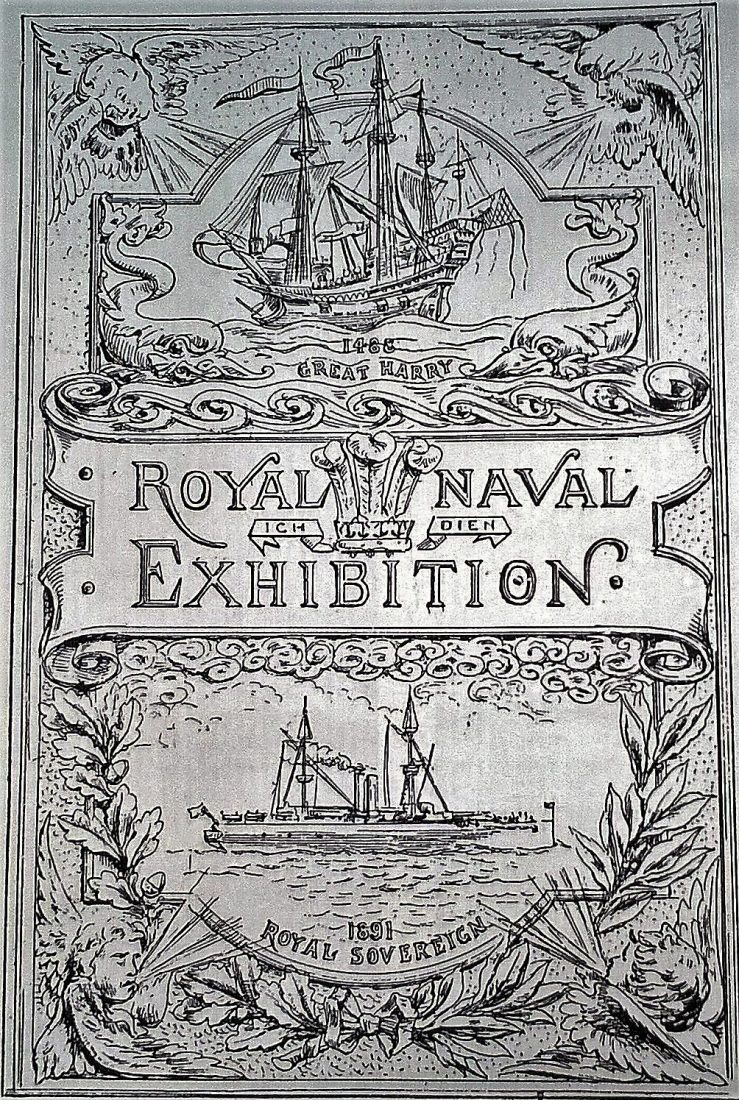 Pride in the navy crossed class boundaries and it was to cater for this that a spectacular exhibition was staged at the Royal Hospital grounds at Chelsea in 1891. Lasting some five months, the exhibition displayed paintings, models and memorabilia lent by private owners, as well as stands at which many of the main armament suppliers and shipbuilders displayed their wares. (See cover of the exhibition catalogue on the left)
Pride in the navy crossed class boundaries and it was to cater for this that a spectacular exhibition was staged at the Royal Hospital grounds at Chelsea in 1891. Lasting some five months, the exhibition displayed paintings, models and memorabilia lent by private owners, as well as stands at which many of the main armament suppliers and shipbuilders displayed their wares. (See cover of the exhibition catalogue on the left)
A large lake was constructed on which 25-ft models of the ironclads HMS Edinburgh and HMS Majestic blasted each other daily while smaller craft ran the gauntlet between two sea-forts, not unlike those in the approaches to Portsmouth harbour. These displays were immensely popular for their sound and fury.
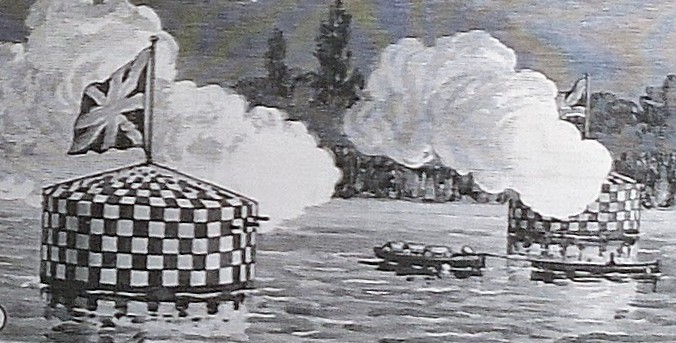
Small craft run the gauntlet between two sea-forts
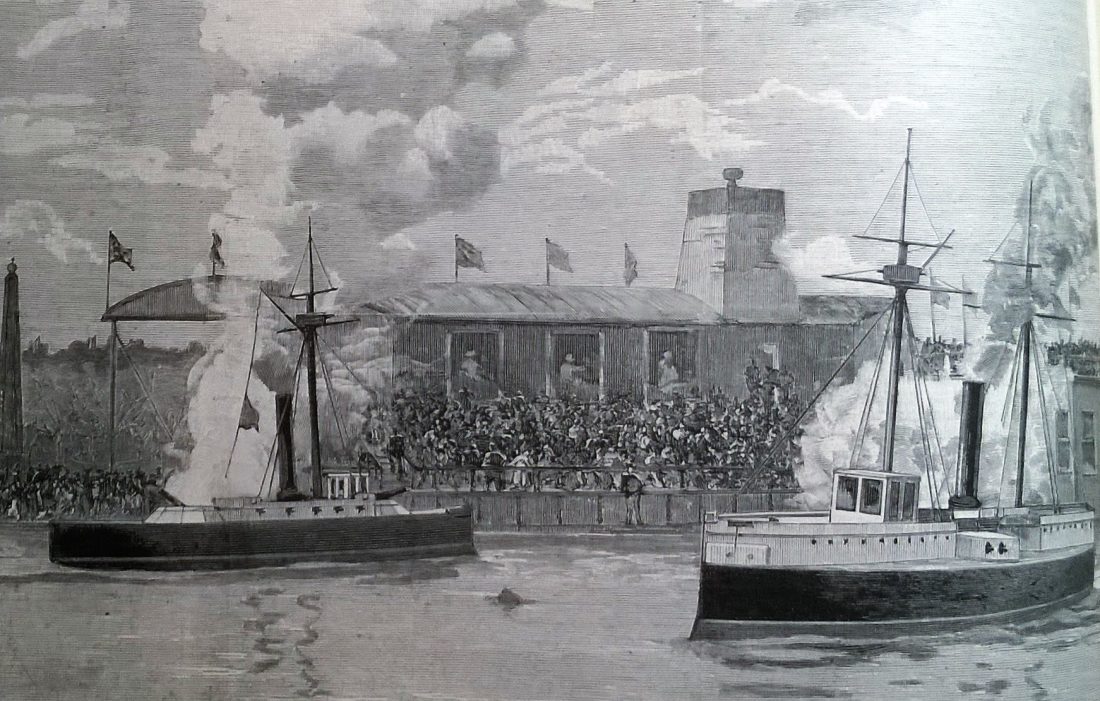
HMS Majestic versus HMS Edinburgh
A decade later these models might have been powered by electricity but in 1891 it was necessary to propel them by a hidden crew of sailors turning crankshafts to drive the propellers (reminiscent of the ill-fated CSS Hunley!). Also hidden for sight was a helmsman who had restricted vision through the pilothouse. The “Battles” were unrealistic in the extreme, the models lying very close together, but this did not bother the crowds, who delighted in the rolling smoke and darting flames of the blanks fired. Night displays on the lake were particularly impressive, allowing demonstration of electric-arc searchlights, a novelty for many of the visitors.
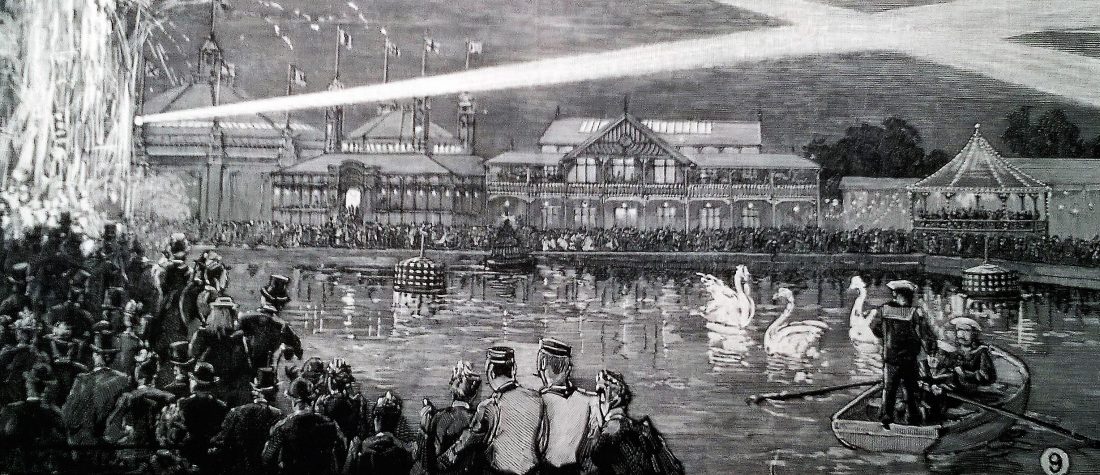
Night display on the lake – note searchlight and temporary exhibition halls in background
The fact that a large part of the navy’s duties in foreign parts was the landing of “naval brigades” – seamen and marines sent to fight ashore – was spectacularly demonstrated by running of field guns across an obstacle course. Most ships carried such weapons, which could be broken down into their components for manhandling and reassembled when needed to be brought into action. Such competitions are still held in today’s Royal Navy and are as spectacular today as they were in 1891.
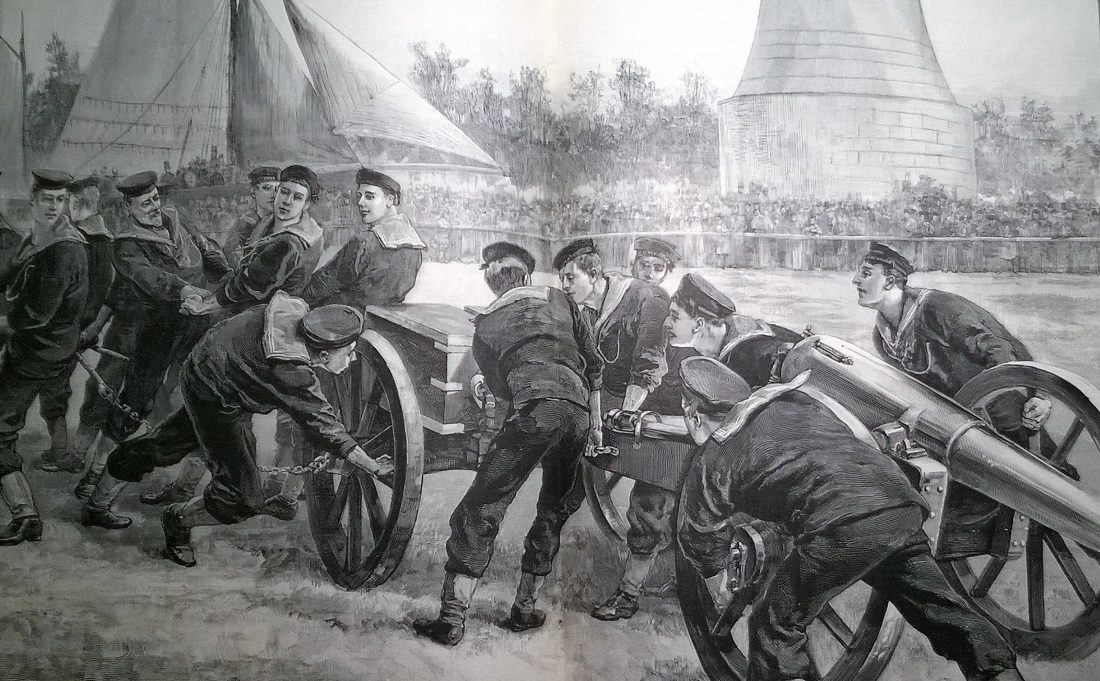
Field-gun run over obstacle course
The exhibition was strongly supported by Queen Victoria and her family, being opened by the Prince of Wales (later Edward VII) and his wife – who did so by pressing a switch to light up a model of the Eddystone lighthouse. The exhibition was subsequently visited by the Queen herself, though judging by contemporary illustrations she seemed to have been pushed around it in a bath chair.

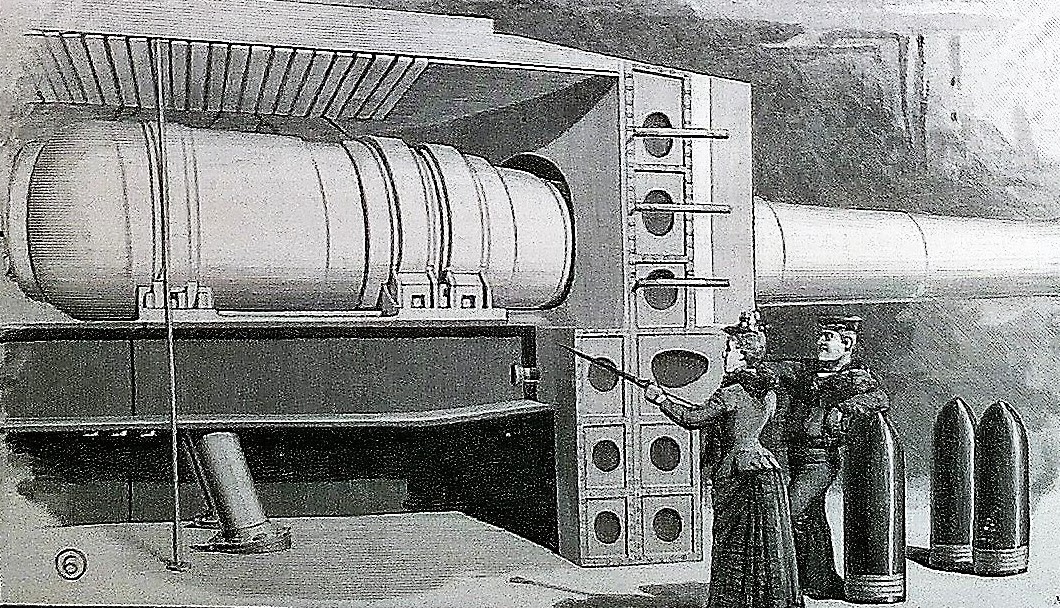
A bustled lady is also impressed by a 100-ton Armstrong gun in a cut-away turret
The exhibition was enthusiastically reported in the popular publications of the period – as the illustrations here show – and it drew enormous crowds. By the time it closed, after five successful months, it had attracted over 500,000 visitors and, after costs were covered, had raised some £50,000 pounds, equivalent to many millions today, for naval charities.
The new Dawlish Chronicles novel is available
Britannia’s Guile
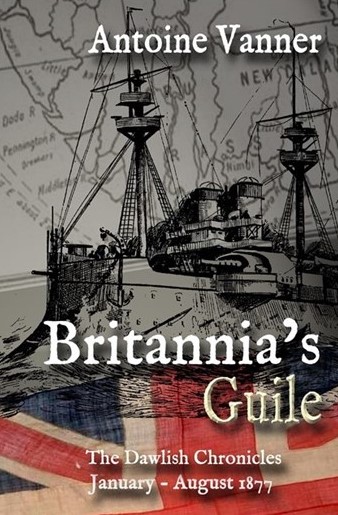 1877: Lieutenant Nicholas Dawlish is hungry for promotion. He’s chosen service on the Royal Navy’s hazardous Anti-Slavery patrol off East Africa for the opportunities it brings to make his name. But a shipment of slaves has slipped through his fingers and now his reputation, and his chance of promotion, are at risk. He’ll stop at nothing to save them, even if the means are illegal . . .
1877: Lieutenant Nicholas Dawlish is hungry for promotion. He’s chosen service on the Royal Navy’s hazardous Anti-Slavery patrol off East Africa for the opportunities it brings to make his name. But a shipment of slaves has slipped through his fingers and now his reputation, and his chance of promotion, are at risk. He’ll stop at nothing to save them, even if the means are illegal . . .
But greater events are underway in Europe. The Russian and Ottoman Empires are drifting ever closer to a war that could draw in other great powers. And Britain cannot stand aside – a Russian victory would spell disaster for her strategic links to India.
The Royal Navy is preparing for a war that might never take place. Dozens of young officers, all as qualified as Dawlish, are hoping for their own commands. He’s just one of many . . . and he lacks the advantages of patronage or family influence. But only a handful of powerful men know how unexpectedly vulnerable Britain will be if war comes. Could this offer Dawlish his chance to advance?
Far from civilisation, dependent on a new and as yet unproven weapon, he’ll face a clever and ruthless enemy in unforeseeable and appalling circumstances.
Only stubborn resolution – and unlikely allies — can bring him through. But at what price?
Britannia’s Guile is set early in the Dawlish Chronicles series (directly ahead of Britannia’s Wolf) and tells how Dawlish met several people who will play major roles in his future career. And they may not all be as they seem . . .


